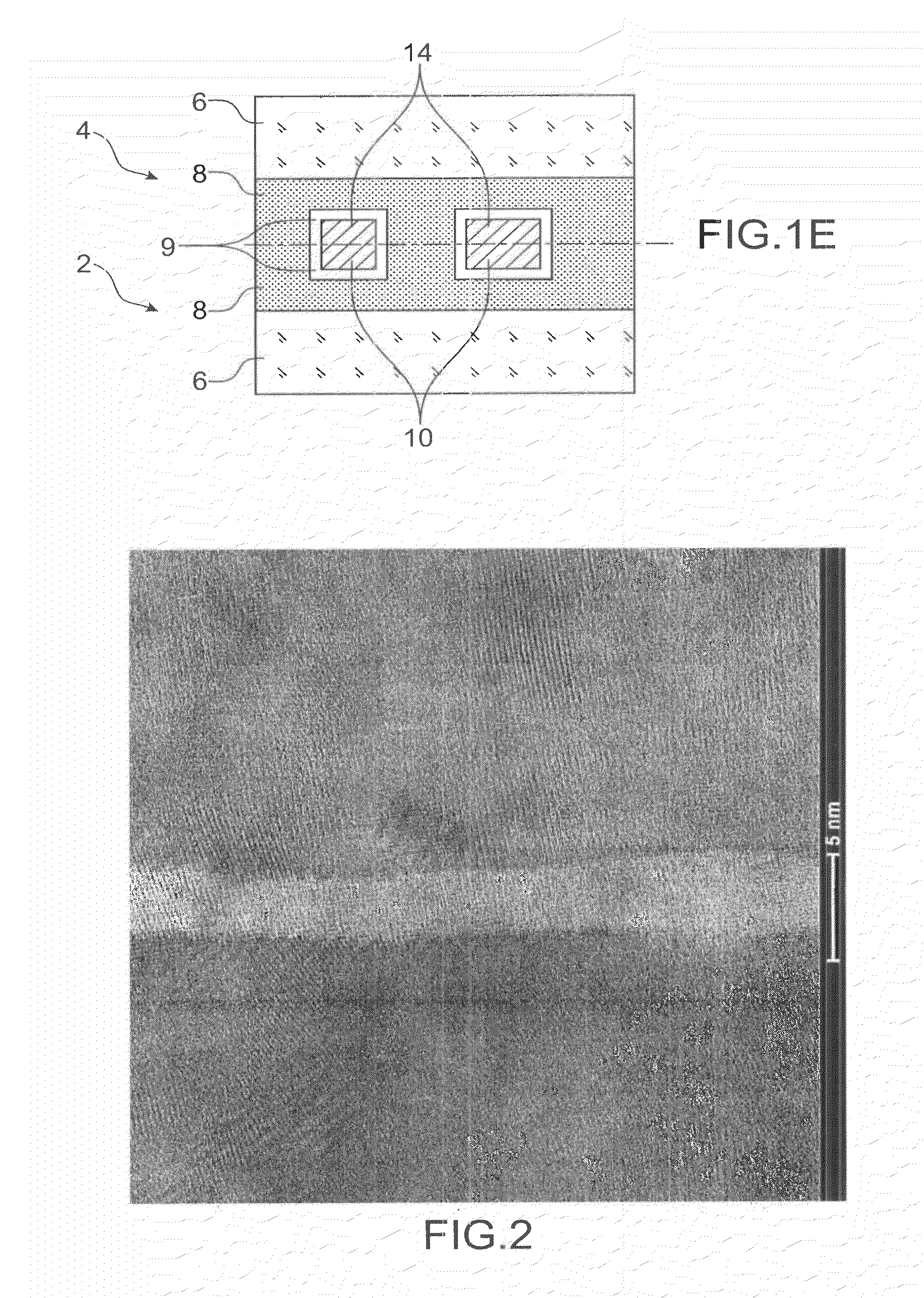Simplified copper-copper bonding
a technology of copper-copper bonding and copper-copper, applied in the direction of solid-state diffusion coating, coating, chemistry apparatus and processes, etc., can solve the problem that applying pressure may damage the mems sensor
- Summary
- Abstract
- Description
- Claims
- Application Information
AI Technical Summary
Benefits of technology
Problems solved by technology
Method used
Image
Examples
Embodiment Construction
[0048]The method according to the present invention consists of achieving molecular bonding between copper elements.
[0049]Both of these elements may each be a copper plate, a copper layer or connection pads or connection lines, one face of which is flush with a substrate in an insulating material. Or further one of the elements may be a copper plate and the other element a set of pads, one face of which is flush with an insulating substrate.
[0050]Molecular bonding is understood as bonding by molecular adhesion during which two planar surfaces adhere to each other without applying any adhesive.
[0051]In FIG. 1A, a schematic illustration of one of the two elements 2, 4 to be bonded may be seen. In the illustrated example, both elements are symmetrical, as this may be seen in FIG. 1E; only one will be described in detail. Element 2 includes a substrate 6, for example in silicon covered with a layer of dielectric material 8, for example in SiO2 and copper pads 10 are made in the dielectr...
PUM
| Property | Measurement | Unit |
|---|---|---|
| total thickness | aaaaa | aaaaa |
| roughness | aaaaa | aaaaa |
| roughness | aaaaa | aaaaa |
Abstract
Description
Claims
Application Information
 Login to View More
Login to View More - R&D
- Intellectual Property
- Life Sciences
- Materials
- Tech Scout
- Unparalleled Data Quality
- Higher Quality Content
- 60% Fewer Hallucinations
Browse by: Latest US Patents, China's latest patents, Technical Efficacy Thesaurus, Application Domain, Technology Topic, Popular Technical Reports.
© 2025 PatSnap. All rights reserved.Legal|Privacy policy|Modern Slavery Act Transparency Statement|Sitemap|About US| Contact US: help@patsnap.com



